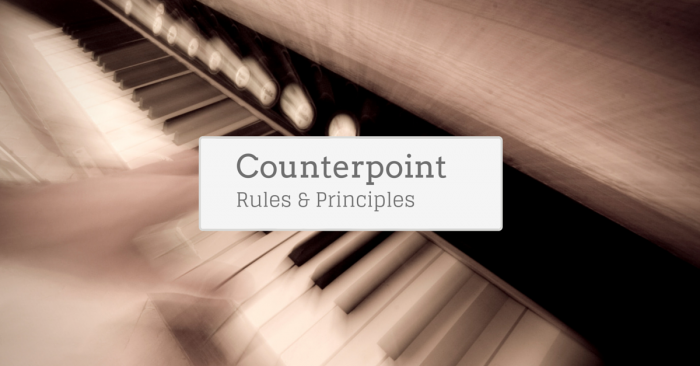...but the person who plays the music. You do a lot of work on your instrument technique, your knowledge of music theory, and your craft of music composition. Do you also have a plan to improve you, the musician? Take two musicians and give them … [Read more...]
Who is Dick Grove?
DICK GROVE (1927-1998) had a distinguished career as a professional writer and composer in Los Angeles and as a unique innovator in the field of contemporary music education. In 1973 he founded the world-renowned Grove School of Music in Los Angeles … [Read more...]
The Rules and Principles of Counterpoint
These rules of counterpoint are simple and easy to memorize. Use them during the arranging phase of your music producing. Counterpoint: a composition which is written strictly according to technical rules. In earlier times, instead of our modern … [Read more...]
Deceptive Cadences
The progression from V to I has the name "authentic cadence" and from IV to I, "plagal cadence." A "deceptive cadence" is understood to mean the substitution for the expected progression, V-I, of the progressions V-VI or V-IV. The effect is strong … [Read more...]
Advice To Beginning Musicians
If you're new to the world of playing music or even if you're just now thinking about playing your very first note, here's my 7-step plan for beginning musicians: Get a cheap instrument. You probably have an idea of what instrument you want to play … [Read more...]
How To Master Musical Textures
If you need more compositional choices or your music needs more depth, you might want to play with the textural qualities of music. This won't be difficult because I've prepared a textural dictionary for you. Polyphonic, while literally meaning … [Read more...]
Top Secret Patterns (shhh, they’re free!)
Patterns are a great way of putting scales to work. Not only do they get you out of any do-re-mi rut, they expand your musical vocabulary. They also expand your mind by forcing you to think about systems within systems—and sometimes within … [Read more...]
Harmony’s Hidden Geometry Revealed
THE GEOMETRY OF MUSICAL CHORDS Dmitri Tymoczko, Princeton University Musical chords have a non-Euclidean geometry that has been exploited by Western composers in many different styles. A musical chord can be represented as a point in a geometrical … [Read more...]
Who Else Wants To Master the Diminished Scale?
The diminished scale is an extremely creative tool. Due to the diminished chord's symmetrical structure of stacked minor thirds, we have two options of diminished scales: half step-whole step and whole step-half step. A major benefit to this … [Read more...]
The Golden Mean in Harmony Part 1
If you ride chaos all the way out to its edge, you find beauty and order... and the Blues Chaos: complete disorder and confusion; behavior so unpredictable as to appear random, owing to great sensitivity to small changes in conditions; the … [Read more...]

